The previous generation in India relates Bajaj’s name with scooters and practicality. While the ‘moms and dads’ of the current generation think so because the thought comes from the very DNA of Bajaj, since the beginning of the millennium the ‘Big B’ of 2 wheelers in India is trying to resurrect the brand as a ‘Motorcycle Manufacturer’. Hence, the Pulsar line up was introduced – to provide a machine with mass appeal which could signify sportiness combined with user friendliness and importantly ‘Value for Money’ factor. That probably explains the introduction of two mechanically different variants of the same model – the 150 and the 180 (cc). While, the Pulsar twins clicked well, with the 150cc variant selling like hot cakes and spelling the end of HH CBZ’s monopoly in the 150cc segment, it was the 180cc variant that took the fight straight to the mighty Kaizma’s territory. The fact that it never gained as much fan following as the Honda CRF230F, nay, the Karizma is another story for another day. Looking at the market at the start of the last decade, none of the Pulsars from past posed a real threat to Karizma and Bajaj’s desperation to capture the ‘high end’ market brought ‘DTSFi’ tag along with an engine output and handling package that took the ball straight to the Karizma’s court and as per many beat it in its own game .
I am quite excited whenever I write about Bajaj as I have been lucky enough to be associated with two models from the Pulsar line up. The 180cc was and still is the bike to ride if one needs high capacity performance at a low cost. But for something better and bigger I decided to swing a leg over the elder brother of Pulsar 180 UG-3 (generation 3) I had been using and bought home the carburetted 220, the flagship Bajaj Pulsar, on 1st November 2010. What followed has been a lot of beautiful memories along with a couple of really sinister ones.
Let me bore the dear readers with some history. The Bajaj Pulsar 220 DTSi evolved from Fuel Injected 220cc Pulsar and geeted the market as the bike with the biggest carb ever and power enough to be popularly known as the ‘Fatest Indian’, or so Bajaj would had liked .
Styling: A step ahead of the Pulsars of the yore ?
Bajaj’s bikes have always been aggressive looking with that muscular and voluptuous fuel tank, the flagship took the game further and bang-on in Karizma territory as it becomes the 2nd bike of the segment to sport a quarter fairing. 220 is smartly crafted with a raking windscreen in the fairing that still manages to give an aggressive stance to the bike. It stands apart with twin headlamp units surrounded in black colored plastic and have ‘wolf eyed’ pilot lamps in the same housing. Raised (3D) Bajaj logo right on the tank, foldable Rear View Mirrors (RVMs), LED lamps & faux vents in side panels and headlamps housing and trafficators sticking out of the fairing lend the bike a sleek and a sharp look. The blacked out parts like engine, forks, alloys lend a mean character to the bike and makes it stand out from other Pulsars (read 150cc).
Though I love the way the bike looks, what catches my attention is that unlike the earlier generations of Pulsar’s, a straight line can’t be traced from the tank to the rear panel, going through the side panels and to me that makes the bike look a little less symmetric. Black grab rails and black clip on like handlebars on my all black Pulsar 220 DTSi gives it a even more meaner and distinctive look. Distinctive as the all black treatment is reserved only for black colored 220s. I got the aircraft type fuel filler cap and foot peg mounts painted to matt black and et voila! The all black effect really did the trick of announcing its departure from the from the lesser Pulsars.
The ‘front heavy’ design does make the bike attractive to look at but the 220 definitely looks bulkier (and not in a good way) as compared to HH Karizma. Build quality of the bike looks leaps ahead of Pulsars of earlier era but still, is a notch below the ZMA (barring that fallen tail light bulb), Yamaha R15 and CBR250R. Fit and finish also is a mile ahead of what we have seen from Bajaj so far.
Styling & Build Quality: 7/10
Engine performance: Downshift? What’s that?
Powered by a 220cc powerhouse, the bike has upward of 21PS to play with. Torque produced is respectable and though the torque delivery is not as linear as the earlier fuel injected version, it is still decent enough to overtake fast moving traffic without much planning of downshifts or giving the rider a hairy moment. A comparison of figures with Karizma (that I used for about 7 months) shows that the mid range and top of the range power of the new bike is a step ahead but older Karizma gives 220 a run for it’s money in the 0-60 kmph stakes. Going by the specifications sheets, 220 produces almost 4 PS more power than Karizma but it is not evident unless the bike gets to stretch its legs.
The torque peaks almost 1500rpm later than karizma which says that bike is as much apt for touring as the Karizma if not more. The gear shift quality again is leaps ahead of initial variants of Pulsar with no false neutrals but still is a notch below the butter smooth quality that the HH possesses. Before everything, I must tell you that I have ridden the 14 PS classic Pulsar 150 DTSi for almost a 5000 kms and that did give me a look at how far the Pulsar series has come in a matter of few years.
This bike has a different exhaust sound than a typical Honda as it has a more bass to it. The pickup of the bike felt good enough to be compared with a CBR250R and the bike is a mile muncher & eats up long distances for breakfast, lunch and dinner without even letting out a burp. An indicated 147 kmph on the speedo (though it takes some time) always puts a smile on my face. And indicated 132 kmph true top speed as per GPS application on an Iphone gave me a reassurance of high speed capability of the bike.
That said, the engine lacks smoothness seen on a Karizma and feels as if it’s an over employed unit of the bike. Make no mistake, the motor gets the job done but not without letting you know of the juice extracted out of it. Outright performance is not what I expected from a single cylinder bike but this is the best so far (barring the recent BR250R).
I switched to a free flow conical type filter and Elf Moto 4xt gold after the bike had clocked 8000 kms and the difference can easily be felt. While the engine and gear shifts definitely feel smoother, the free flow filter ensues that the bike is much more rev happy now. It may be noted that I had undertaken a similar mod job on the Pulsar 180 and to ensure that bike does not runs lean, the main jet from Karizma had been called to do the duty. As the Pulsar 220 sports the largest ever Carb on any Indian bike, borrowing a larger jet from some other bike went out of question. Hence, some precision drilling had to be done to prevent the bike from running lean.
Engine performance: 8/10
Handling And Ride Quality: My tourer!
With a stepped seating position and slightly rear set pegs, the bike does feel to be biased towards performance riding. The handlebar is not as high raised as the ‘BSA bicylcles’ unit on a Karizma and the spot on ride height provides a confident seating posture. The complete setup ensures that the rider feels well connected and ‘one’ with his machine. A well cushioned seat with enough padding and width provides very good support even under the ‘sporty’ riding. The pillion sits higher to the rider and under ‘normal’ riding conditions won’t get a reason to complain. I’ll say that 220 is not one of the most comfortable bikes I have ridden till date as this definitely gives a good mix of comfort and a sporty stance. Now, comfortable the 220 might be, but it not as comfortable as the HH Karizma. I have used a Karizma for some long tours and the bike has a more comfortable seating than the 220. The motor feels much more relaxed but it is the abundance of power on the 220 that makes me rate the Bajaj flagship just a notch below the rival.
My 220 came with MRF footwear and they manage to provide good confidence when turning into a corner. Tyre size 90 * 17 upfront and 120 * 17 at rear feel very apt for the job and unlike the Karizma, the need to upgrade the rubber is not called for. The fact that these are tubeless makes the deal even sweeter. The bike behaves well on the well paved corners and a couple of knee downs were managed, though it wasn’t as easy as on the R15 and required some skill coupled with confidence on part of the rider.
The varying terrain was accepted with considerable ease. High speed stability is good bordering very good. A low ground clearance ensures that the main stand was dumped within the first 500 kms I did on the Bike. A plush ride quality will swallow potholes but will sure let the rider know about the job suspension will be up to and I like my bike’s suspension to talk to me. It’s a step behind the FI 220 in ride quality but the confidence gained in corner carving more than compensates for it. Make no mistake, this is no R15 but then how often does a R15 owner goes for a track day? With a comfortable stance for touring and enough corner hunting ability, it just ticks my list’s boxes for the tourer of my choice.
Handling & Ride Quality: 6.5/10
Equipment : New wine in Old Bottle?
List of electricals goes long. A full DC electric setup, an electric start (no kick starter provided), projector lamps, backlit Speedo console, backlit switchgear, digital fuel gauge and blah-blah. The bike has clear lens indicators and like rest of Pulsars, LED tail lamp and tell tale lights along with addition of low battery warning light. Again, the bike has projector lamps with 55 W bulbs making it the bike with most powerful headlamps in the market. I switched over to HIDs and it was good enough to produce daylight in the darkest of nights. Switchgear also has an Engine Kill switch (absent in Karizma) and the bike has gas filled adjustable real shock absorbers though I think it is high time Bajaj should look at Monoshock setup. The ‘pass’ light switch is well positioned and does the job pretty well. The buttons never felt flimsy (unlike earlier Pulsars) and just one upgrade of quality should place them in the league of the switch quality found on CBR250. The twin horn setup ensures that the boom of honking coupled with the rorty exhaust notes will keep the path clear and devoid of children and cyclists crossing your path.
The instrumentation though is top notch, looks a bit dated, thanks to earlier versions of Pulsar out in the market with it since almost more than 5 years. And this prevents me from giving it a cent percent result.
Equipment: 9/10
Braking: I am loving it !
The bike comes with an all disc setup. That means goodbye to drum brakes. What is even better is that the rear disc is not sharp enough to abruptly lock up the wheels but still is adequate enough for halting the bike from triple digit speeds without having to break a sweat. The front brake has more than adequate bite but a little brake fade was noticed under repeated hard braking. That said, the brake pads are very well priced and the front units cost a whopping INR 1200 less than Karizma’s front disc brake pads (priced at INR 1550) and unlike 220 it has been made to do with just front disc brake.
Braking: 8/10
Mileage and Pricing: Superb and yet no Skoda.
Though Bajaj never launched 220 as a commuter and with no “100 kmpl” promise but I managed to extract a worse of 33 Kmpl and a best of 48Kmpl and that makes it feel much more friendly as compared to the Karizma which has rumors of 20 Kmpl doing rounds. 220 is also available in bikini faired variant and it has tank extensions as first seen on Pulsar 200 (now defunct). The sticker work on both bikes is minimal and that is a refreshing change after ‘plus plus, plus plus pro, plus plus multiply’ versions of HH bikes where it feels that they have let lose a kindergarten kid equipped with crayons to scribble on their bikes.
The DTSI S variant (Bikini fairing is a full 2.5 K cheaper than the 83K priced DTSI F ). The F version is a couple of thousand bucks dearer than a KarizmaR but offers much more power packed performance plus equipments and hence a VFM deal. The most inexpensive spare part pricing is an icing on the cake.
Mileage, Variants & Pricing: 9/10
Reliability and the mishap: Crashed at approx 130 kmph and lived to tell the tale, both the man and his machine
More than a year ago, I was in a rush to reach back home and remember the bike being at the v-max. Out of nowhere came a school bus (driving on the wrong side of the road) and the next thing I hear is that I had a crash 3 months ago and I have been in comatose all this while. I learnt that my bike was in a pretty bad shape and it was quite obvious. Soon, I was having this ‘approximate expenses’ list in my mind and I saw the swing arm. the exhaust, the handlebar, front fairing, forks, new engine oil and the headlights being replaced. Thankfully, chassis was fine and so was the engine. The repairs were done at the Chandigarh Bajaj service centre and the bill came out to be merely Rs.27000. Other than this, the routine services and the fuel, the bike has never demanded a penny to be spent on it and the inexpensive spares have really impressed me. In about 22000 kms of riding, the bike has never let me down and has been a reliable companion. The stories of Bajaj bikes being unreliable surprise me. Surprisingly, many of these come from owners of non-Bajaj bikes.
Reliability: 9/10
Conclusion (time to shut the f*** up!):
In a Nutshell, if one needs a track oriented bike, the r15 or baby Ninja will be your best bet. For touring, Karizma still does the job and how!. For ‘better than Karizma’ engine performance at similar price, enough handling capabilities to deal with mountain roads and lot of street cred, look no further than a Pulsar 220 F.
I understand that this is a very touchy topic but whatever is written here comes from a bloke who had a Pulsar 180 as his first bike, clocked some miles on a classic 150 and spent some quality time with a Karizma (and loved it). For touring, Karizma is still the best bet while the R15 makes you ride like a pro. But for a college goer like me, who deals with city traffic, express ways and mountains, 220 does the job. In one line- it is money well spent.

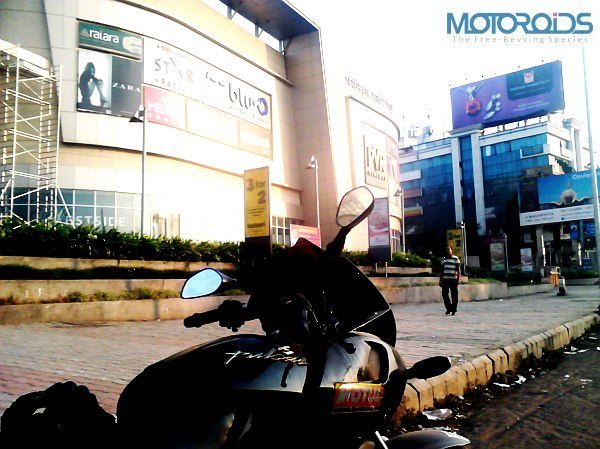

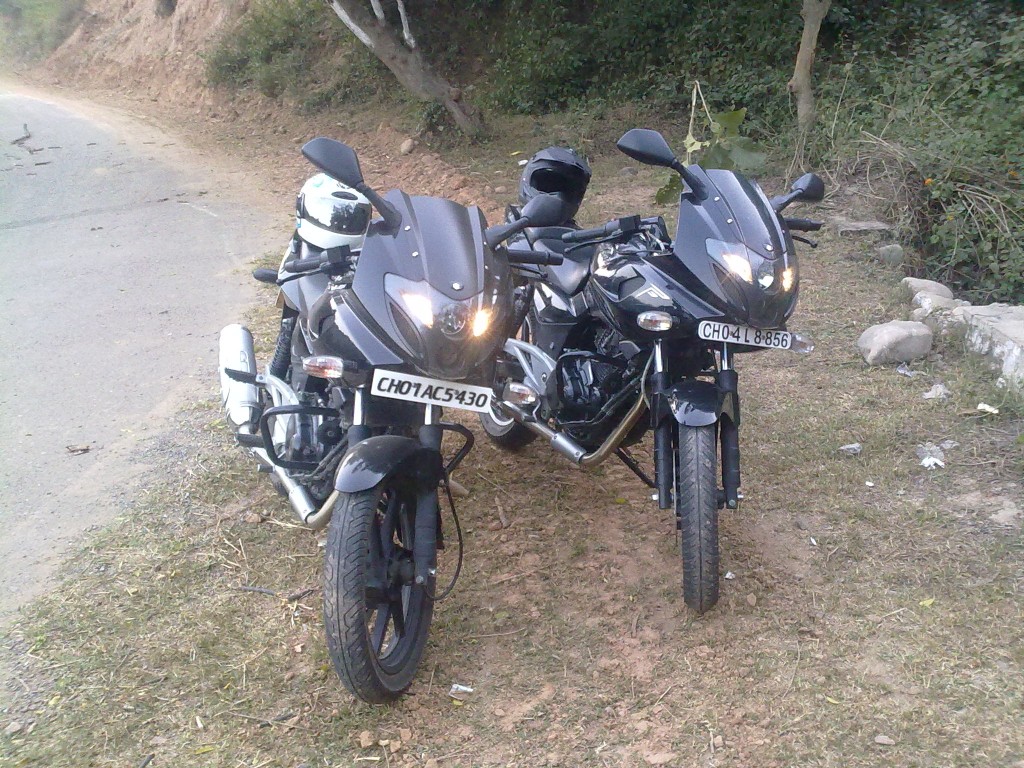
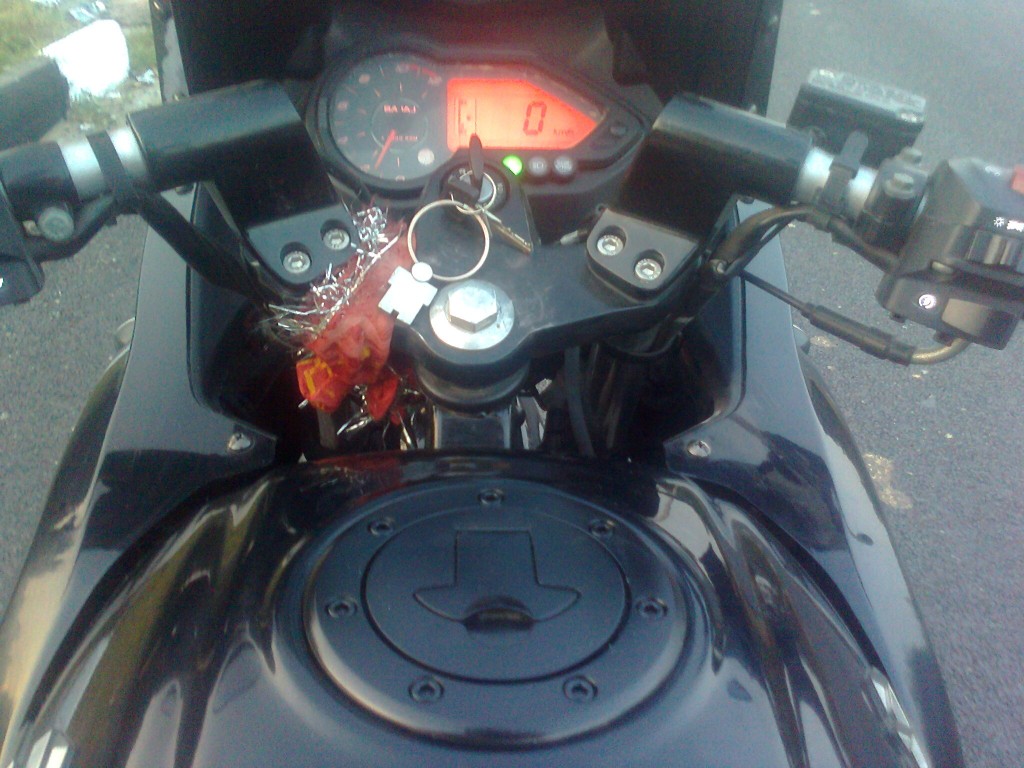
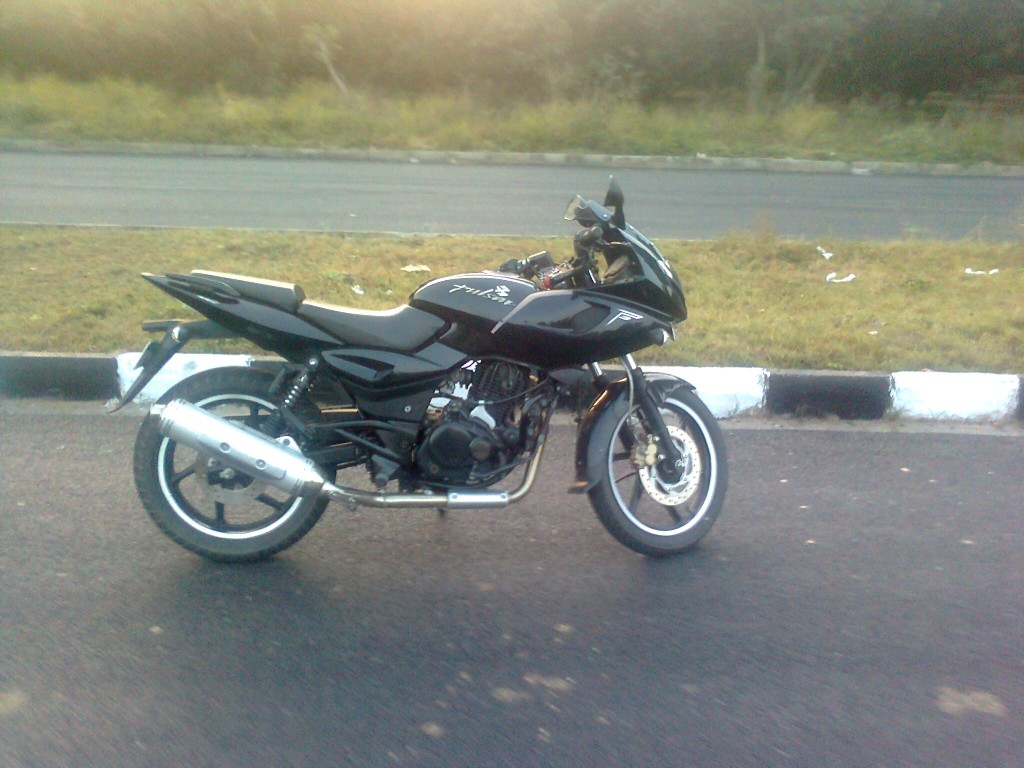
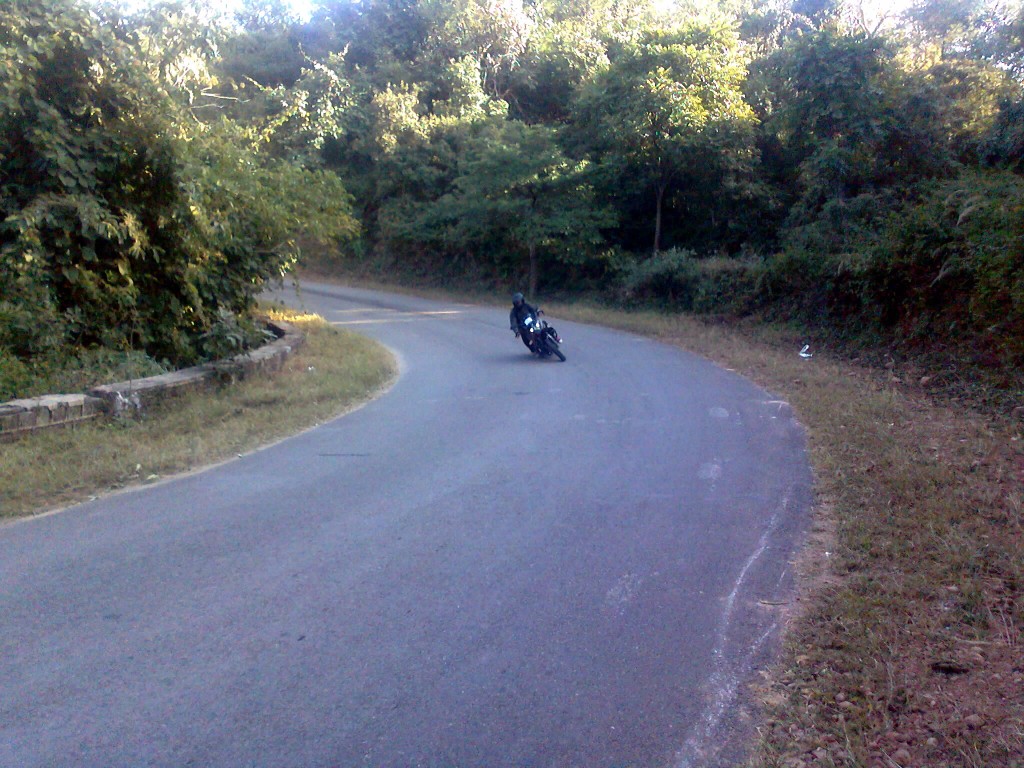
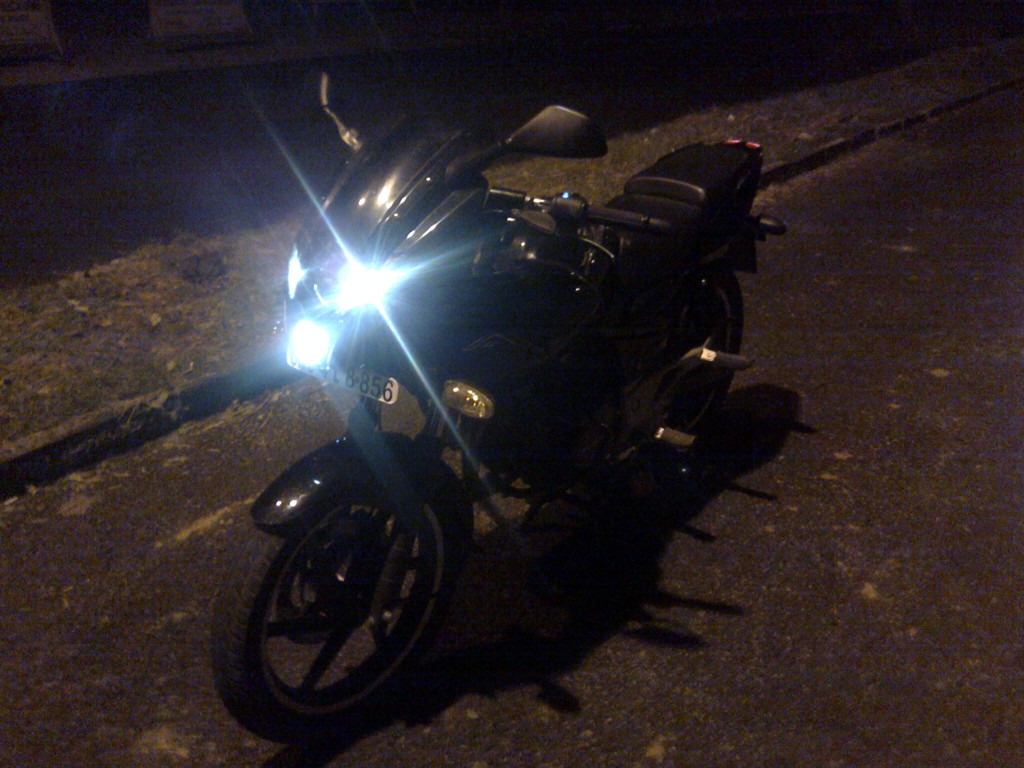
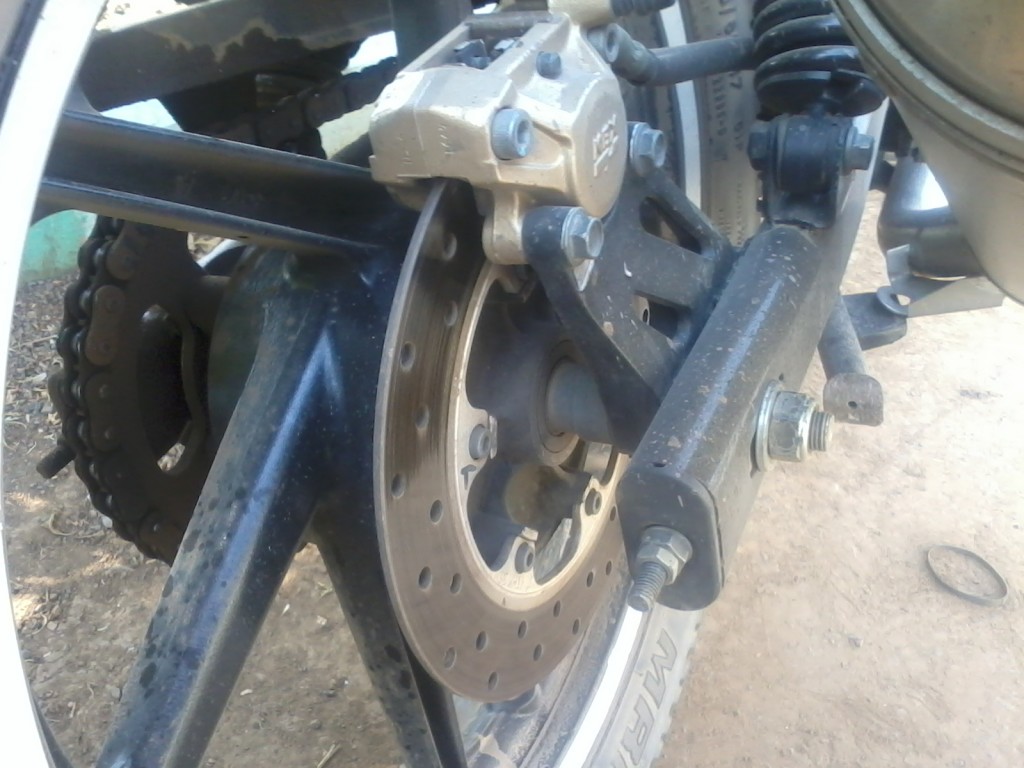
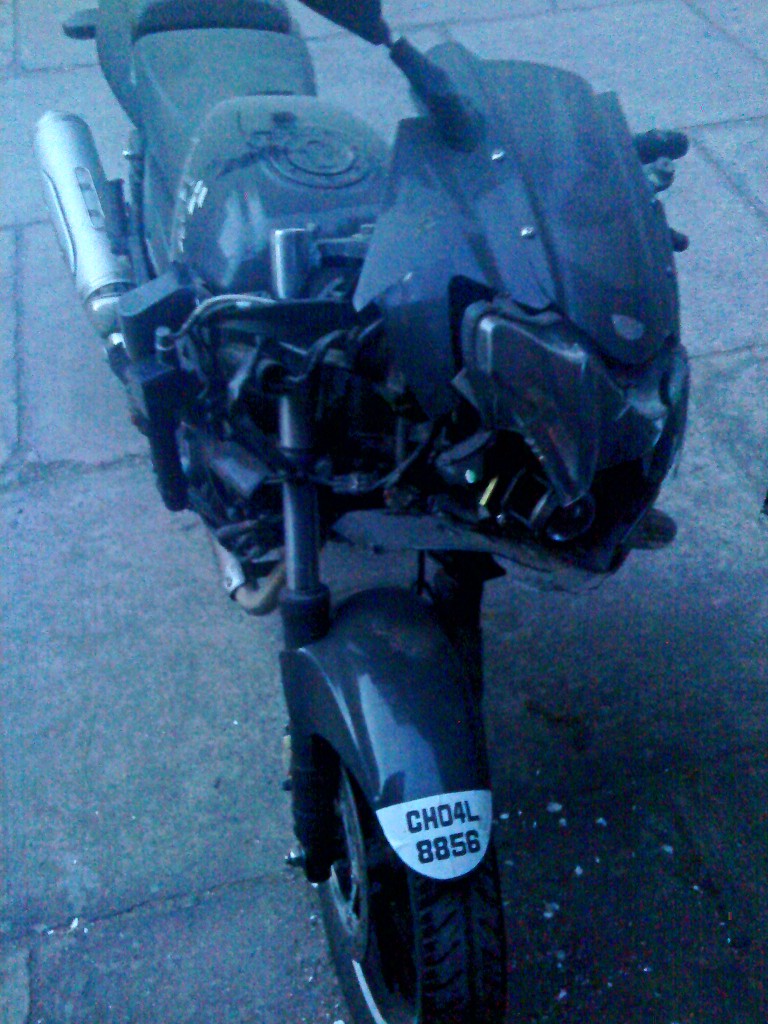
Firstly, feels ‘oh-so-nice’ to know that you spent time reading about my bike. Secondly and more importantly, I do realize that I can make quite some errors at times.
However, this review here is among the very firsts from me and I have ever since been working on to improve my writing.
Whether or not the improvement shows in my recent posts, that is for you to decide.
Again, I highly appreciate your feedback and can’t thank you enough for the wishes. Hoping that I would evolve into a better writer and make you proud.
Warm regards.
M not a automobile buff or a professional media czar….but I love penning a few thoughts through word medium on versatile topics…m not commenting here on pulsar or karizma or on the wonderful technically sound write up by the author…i believe that a critical comment on such tech-specific write-ups is the domain of professionals operating in automobile related spheres…so iI believe its a well crafted/drafted report by yatharth…however I would like the author to be careful and doubly sure before posting the piece/s finally for the readership…do give a second and even third reading before its put up for consumption…it would help in avoiding spelling mistakes (as Karizma somewhere has become Kaizma and 'but the' has become 'butthe'). Similarly some , rather quite a few , grammatical aberration could be spotted leading to contradictions…(please re- read the portion "the motor feels……..below the rival" and the portion "I'll say that 220 is not……..more comfortable seating tan the 220" and the author will realize to what m trying to point to…lad take it in good spirits and continue to evolve. Wishing you a lot many happy and acclaimed 'writings' in times to come…best of luck
dushyant
Rightly pointed out. . .
Nice Article i Like it.But you must use Hero Motor Corp or Hero Karizma..dont use Hero Honda Karizma.This is the on l Mistake i Found.
better than karizma engine performance?
on road or in someone s dreams?